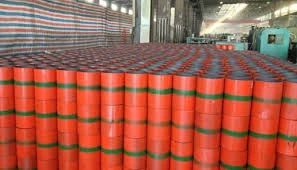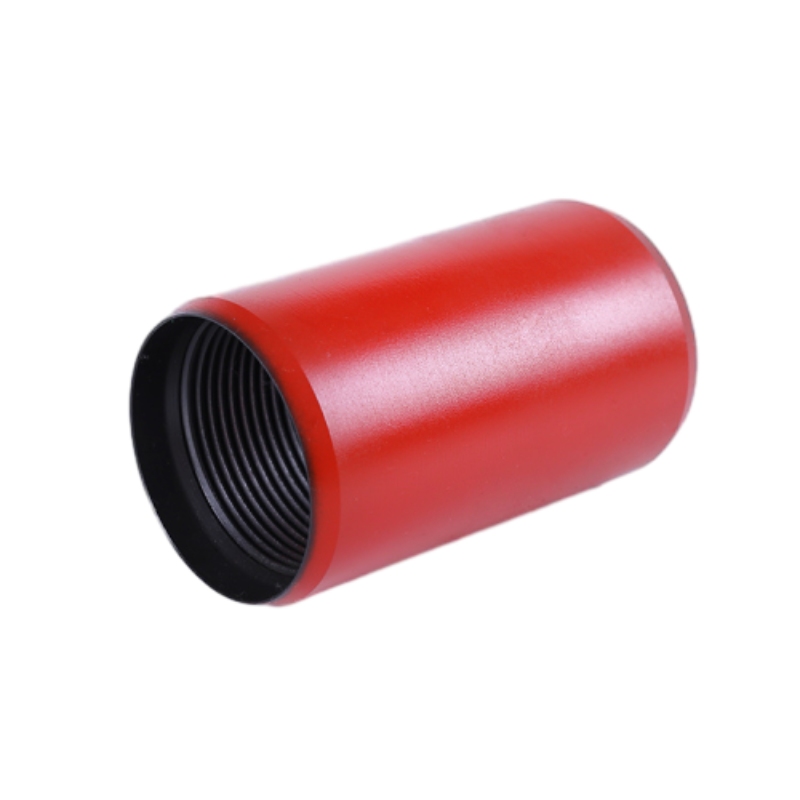API Casing Sizes Chart & Wholesale Threading Coupling - High Quality API Tubing and Casing Solutions
- Introduction to API Casing Sizes: Importance and Global Relevance
- Technical Specifications and Data Impact
- Comparative Insights: Wholesale API Threading Casing Coupling Manufacturers
- Custom Solutions: Meeting Unique Project Demands
- Real-world Applications: Success Stories & Case Studies
- API Tubing and Casing Chart Analysis for Optimal Selection
- Conclusion: The Global Value of API Casing Sizes

(api casing sizes)
Understanding API Casing Sizes and Their Global Importance
API casing sizes form the backbone of efficient wellbore isolation and structure in both oil and gas extraction. The American Petroleum Institute (API) developed these casing standards to ensure interchangeability and safety across international drilling operations. Modern global exploration heavily relies on these uniform sizes for predictable performance, ease of procurement, and logistical compatibility. Companies and engineers prioritize API casing sizes to avoid compatibility risks, reduce procurement costs, and streamline project planning. In recent years, the global casing market has surpassed USD 10 billion annually, with over 85% of new wells specifying standardized API casing dimensions for borehole integrity and operational efficiency.
Technical Specifications and Data Impact
The API casing and tubing catalog encompasses multiple diameters, wall thicknesses, and threaded end types, each tailored to unique geological and project demands. Industry-standard sizes range from 4 ½ inches up to 20 inches in diameter, with common weights per foot from 9.5 lbs/ft to over 94 lbs/ft for deepest wells. Wall thickness and grade (such as J55, K55, N80, L80, P110) are selected based on anticipated downhole pressures and corrosiveness.
API casing sizes have a direct impact on well integrity. Analysis of field data shows that mismatched casing sizes can lead to annular pressure buildup, reduced extraction volumes, or dangerous blowouts. Oilfield operations report up to a 60% reduction in non-productive time (NPT) when correct API sizes and threading combinations are deployed. The comprehensive nature of these standards ensures casing, coupling, and threading compatibility even when multiple vendors are involved in project supply chains.
Wholesale API Threading Casing Coupling: Manufacturer Comparison
Selection of high-quality casing couplings is as critical as the pipe itself. Leading manufacturers continuously innovate to meet evolving demands for strength, corrosion resistance, and precision threading. The following comparative table presents a market snapshot of three leading brands supplying wholesale API threading casing coupling:
| Manufacturer | Thread Type (API) | Material Grades | Max OD (inch) | Anti-Corrosion Coating | Certified API Spec 5CT | Lead Time (days) |
|---|---|---|---|---|---|---|
| Brand A | STC, LTC, BTC | J55/N80/L80/P110 | 20 | Galvanized + Phosphate | Yes | 18 |
| Brand B | STC, LTC | K55/N80 | 13 3/8 | Epoxy | Yes | 25 |
| Brand C | BTC | L80/P110/C95 | 16 | Electroplated | Yes | 14 |
As evident from the data, differences in lead time, material grade offering, and anti-corrosion technology can significantly affect both the operational efficiency and the lifecycle cost of a well. Technical due diligence paired with robust vendor pre-qualification is critical when selecting among competitive API casing and coupling options.
Custom Solutions: Engineering to Meet Unique Project Demands
Exploration and production complexity are on the rise, with unconventional resources and deepwater wells pushing the limits of standard API casing sizes and couplings. For projects facing sour gas, extreme depths, or highly deviated trajectories, standard catalog options may not suffice. Custom engineering of API-compatible casings—such as customized thread profiles, unique diameter-to-thickness ratios, or proprietary alloy grades—can deliver substantial safety and performance upgrades. Some providers offer modular casing designs for easy on-site length adjustment or quick-change coupling for emergency repairs.
Collaborative project management, involving reservoir engineers, procurement officers, and technical liaisons, ensures that bespoke casing solutions align with project time frames, budget constraints, and regional regulatory requirements. These customizations are often substantiated by finite element analysis, fatigue testing, and pilot installations before project-wide deployment. The flexibility enabled by the API standards ensures that such tailored solutions maintain both interoperability and international certification, mitigating risks associated with supply chain diversity and field retrofitting.
Real-world Applications: Success Stories & Case Studies
Field implementation continues to reinforce the value derived from both standardized and custom API casing solutions. In one North Sea project involving high-pressure, high-temperature conditions, the adoption of premium grade P110 API casing reduced mid-well failures by 46% over a three-year drilling campaign. Another Middle Eastern operator implemented customized couplings with phosphate coatings in highly sour oilfields, extending average casing lifespan by nearly 30% compared to uncoated alternatives.
In the US Permian Basin, an integrator leveraged multi-vendor, API-compliant casings to cut procurement lead time by three weeks and kept NPT below industry benchmarks. The ability to trace casing components across vendors via API certs and digital batch records enabled rapid root-cause analysis for integrity issues, driving further operational improvements. These real-world examples underscore that proper leveraging of API casing sizes—paired with high-quality couplings and smart supply chain practices—yields measurable gains in efficiency, safety, and lifecycle profitability.
API Tubing and Casing Chart Analysis for Optimal Selection
API tubing and casing charts serve as essential decision tools for drilling engineers. They provide quantifiable data regarding dimensional compatibility, collapse and burst resistance, as well as drift diameter. A snippet of such a chart is demonstrated below:
| Size (inches) | Weight (lbs/ft) | Wall Thickness (inches) | Burst Pressure (psi) | Collapse Pressure (psi) | Drift Dia. (inches) |
|---|---|---|---|---|---|
| 5 1/2 | 17.00 | 0.407 | 8,910 | 7,830 | 4.767 |
| 7 | 26.00 | 0.500 | 8,330 | 6,420 | 6.001 |
| 9 5/8 | 47.00 | 0.625 | 8,750 | 4,950 | 8.535 |
| 13 3/8 | 68.00 | 0.730 | 7,500 | 3,090 | 12.347 |
Engineers analyze these charts for design assurance against downhole contingencies. A well’s geological cross-section and expected load profiles determine the optimal size and grade. This proactive assessment eliminates costly workovers and drives regulatory compliance. Digital charting tools now enhance this process, embedding API specifications, QA records, and field notes for truly data-driven well construction.
Global Value of API Casing Sizes: A Modern Resource for Energy Projects
In today’s volatile energy sector, consistency and reliability in well construction are non-negotiable. The universal reference provided by api casing sizes
has reshaped supply chains, reduced field failures, and fostered global engineering benchmarks. Through advanced technologies, strong vendor ecosystems, and tailored options, modern projects can meet ever-increasing demands with confidence. As digitalization and performance analytics further integrate with traditional standards, these systems will continue to serve as foundational pillars, ensuring safe, economic, and environmentally responsible resource development worldwide. In leading markets, the preference for standardized, API-compliant solutions will only grow, underscoring the enduring relevance of this versatile and deeply integrated specification set.

(api casing sizes)
FAQS on api casing sizes
Q: What are the standard API casing sizes?
A: API casing sizes typically range from 4 1/2 inches to 20 inches in diameter. These standardized sizes ensure compatibility across oil and gas operations.Q: How can I find wholesale API threading casing couplings?
A: Wholesale API threading casing couplings are available from specialized oilfield suppliers. You can contact manufacturers or distributors who comply with API standards for bulk orders.Q: Where can I access an API tubing and casing chart?
A: An API tubing and casing chart is often available on oilfield supplier websites and API's official site. These charts provide size, weight, thread type, and grade information.Q: Why is it important to use standardized API casing sizes?
A: Standardized API casing sizes ensure operational safety and equipment interoperability. They help maintain industry consistency and regulatory compliance.Q: What factors affect the selection of API casing and tubing?
A: Factors include well depth, pressure, temperature, and formation characteristics. Engineers refer to the API tubing and casing chart for appropriate selection.-
Tubing Crossover - API Compatible, Custom Sizes, In StockNewsNov.10,2025
-
Tubing Coupling | High-Strength, Leak-Proof Steel CouplingsNewsNov.10,2025
-
Wholesale API Threading Casing Coupling | API 5CT, Fast ShipNewsNov.10,2025
-
Pup Joint Supplier | API Certified, Custom, Quick ShipNewsNov.10,2025
-
Pup Joint Manufacturers | Precision Machined, Fast DeliveryNewsNov.10,2025
-
Tubing Coupling | Precision Steel, Leak-Proof, Fast DeliveryNewsNov.03,2025







